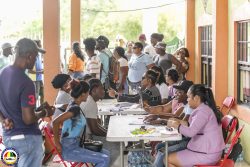HONG KONG, (Reuters) – A leading virologist has described the new H1N1 influenza virus as “very unstable”, meaning it could mix and swap genetic material when exposed to other viruses.
The new virus, which has infected 5,251 people in 30 countries and killed 61, has displayed great efficiency in spreading among people, said Guan Yi, a microbiologist with the University of Hong Kong.
“This virus has been around only a few months, it is very unstable … and we know that its presence is dramatically increasing in human population, so the chance of it meeting with H5N1 is actually increased,” Guan said in an interview on Tuesday.
“Both H1N1 and H5N1 are unstable so the chances of them exchanging genetic material are higher, whereas a stable (seasonal flu) virus is less likely to take on genetic material.”
While H1N1 appears to be mild so far with many infected people recovering even without treatment, the H5N1 has a mortality rate of between 60 to 70 percent.
Experts are fearful about the emergence of a hybrid which combines the killing power of the H5N1 with the efficient transmissibility of H1N1. H5N1 is believed to be endemic in countries like China, Indonesia, Vietnam and Egypt.
Guan, an expert on both the H5N1 and SARS, has analysed the genetic sequences of the new virus, which is a triple reassortant containing genetic material from swine, human and bird.







